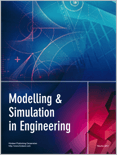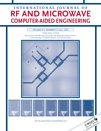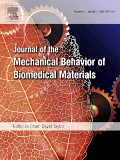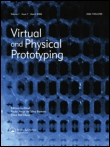
Eria-Revista cuatrimestral de Geografia
Scope & Guideline
Advancing Interdisciplinary Insights in Geography.
Introduction
Aims and Scopes
- Metamaterials Research and Development:
The journal places a strong emphasis on the design, fabrication, and characterization of metamaterials, including their unique electromagnetic properties and potential applications. - Innovative Applications:
Research published in the journal often explores innovative applications of metamaterials in diverse areas such as telecommunications, biomedical engineering, and environmental science. - Computational Modeling and Simulation:
A significant focus is placed on computational methods for the design and analysis of metamaterials, utilizing advanced simulation techniques to predict material behavior. - Interdisciplinary Approaches:
The journal encourages interdisciplinary research that bridges physics, engineering, and materials science, fostering collaboration across these fields. - Emerging Technologies:
The journal seeks to highlight emerging technologies related to metamaterials, including advancements in nanotechnology and machine learning applications in material design.
Trending and Emerging
- Biomedical Applications of Metamaterials:
Recent publications have increasingly focused on the use of metamaterials in biomedical applications, showcasing their potential in areas such as imaging, drug delivery, and diagnostics. - Machine Learning in Metamaterials Design:
There is a growing trend towards integrating machine learning techniques in the design and optimization of metamaterials, enhancing their performance and application scope. - Terahertz and Microwave Technologies:
Research centered on terahertz and microwave applications of metamaterials is on the rise, particularly in the context of telecommunications and sensing technologies. - Dynamic and Tunable Metamaterials:
The journal is increasingly publishing studies on dynamically tunable metamaterials, which can change their properties in real-time, offering exciting possibilities for adaptive technologies. - Nanophotonics and Plasmonics:
Emerging themes in nanophotonics and plasmonics are becoming more prominent, as researchers explore the interactions of light with metamaterials at the nanoscale, leading to novel optical devices.
Declining or Waning
- Traditional Material Studies:
Research focused on conventional materials and their properties has decreased, indicating a shift towards more innovative and complex metamaterials. - Basic Electromagnetic Theory:
Papers discussing fundamental aspects of electromagnetic theory without direct application to metamaterials have become less common, suggesting a move towards more applied research. - Static Material Properties:
There is a waning interest in static properties of materials, as the journal increasingly favors dynamic and tunable properties relevant to advanced applications. - Non-Metamaterial Applications:
Research not directly related to metamaterials, such as studies on traditional electromagnetic devices, is appearing less frequently, reflecting the journal's focus on cutting-edge materials. - Environmental Impact Studies:
Although environmental applications are still relevant, specific studies on the environmental impact of metamaterials are becoming less prevalent, possibly due to the growing emphasis on technical advancements.
Similar Journals

Nanoscience and Technology-An International Journal
Advancing Knowledge in the Nano RealmNanoscience and Technology-An International Journal, published by BEGELL HOUSE INC, is a leading platform dedicated to the rapidly evolving fields of nanoscience and nanotechnology. With its ISSN 2572-4258 and E-ISSN 2572-4266, the journal serves as a crucial resource for researchers, professionals, and students alike, focusing on advanced materials, condensed matter physics, and mechanics of materials. It holds a commendable position in the scholarly community, evidenced by its Q2 ranking in 2023 across multiple categories including Condensed Matter Physics and Materials Science. The journal aims to disseminate high-quality research, promote interdisciplinary collaboration, and facilitate innovation within the nano realm. With its convergence period from 2019 to 2024, it continues to attract a diverse array of studies and insightful contributions, reinforcing its importance in shaping the future of nanotechnology and its applications.

Korean Journal of Optics and Photonics
Shaping Tomorrow's Technologies with LightKorean Journal of Optics and Photonics is a premier publication dedicated to advancing knowledge in the rapidly evolving fields of optics and photonics. Published by the esteemed Optical Society of Korea, this journal serves as a vital platform for researchers, professionals, and students seeking to disseminate their findings and innovations in areas such as optical engineering, photonics technologies, and application developments. Although the journal does not operate under an Open Access model, it is committed to high-quality peer-reviewed research that contributes significantly to both theoretical and practical advancements in the field. With an increasing focus on interdisciplinary research, the Korean Journal of Optics and Photonics is poised to play a crucial role in fostering collaboration and driving the global conversation on light science and technology. The journal's ISSN is 1225-6285 and it also carries the E-ISSN 2287-321X, ensuring its availability to a wide readership.

Modelling and Simulation in Engineering
Bridging Theory and Practice in Engineering ExcellenceModelling and Simulation in Engineering is a pioneering open-access journal, published by HINDAWI LTD, and established in 2007. With a focus on advancing the fields of engineering, computer science applications, and modeling and simulation, this esteemed journal serves as a vital platform for researchers, professionals, and students alike. The journal has made significant strides in its academic contributions, reflected in its current categorization within the Q3 quartile in Computer Science Applications, Engineering (miscellaneous), and Modeling and Simulation as of 2023. With a Scopus ranking of 133 out of 307 in General Engineering and 183 out of 324 in Mathematics' Modeling and Simulation, it emphasizes the crucial interplay between theoretical research and practical applications. Each article published in Modelling and Simulation in Engineering undergoes a rigorous peer-review process, ensuring high-quality research dissemination. By maintaining an open-access format, the journal promotes global collaboration and accessibility, supporting the dissemination and advancement of engineering knowledge worldwide. With its headquarters located in the United States, the journal is truly positioned at the convergence of innovation and research.

APPLIED MATHEMATICS AND MECHANICS-ENGLISH EDITION
Connecting Mathematical Theory to Real-World ChallengesApplied Mathematics and Mechanics - English Edition is a prestigious journal published by Shanghai University, focusing on the interdisciplinary applications of mathematics and mechanics across various scientific and engineering domains. With an ISSN of 0253-4827 and an E-ISSN of 1573-2754, this journal has established itself as a vital resource since its inception in 1980, extending its coverage well into 2024. The journal boasts impressive Scopus rankings—placing it in the top 10% of the Applied Mathematics category and the top 20% in Mechanical Engineering and Mechanics of Materials—reflecting its significant impact and contribution to research. Currently categorized in the Q2 and Q1 quartiles, it caters to a diverse audience that includes researchers, professionals, and students seeking to explore cutting-edge developments and innovative methodologies in the field. Although the journal is not open access, it remains committed to disseminating high-quality research that addresses contemporary challenges in applied mathematics and mechanics, fostering a deeper understanding of their practical implications.

Orbital-The Electronic Journal of Chemistry
Unlocking the Secrets of Chemical ScienceOrbital - The Electronic Journal of Chemistry, ISSN 1984-6428, is an esteemed open-access journal published by the Universidade Federal de Mato Grosso do Sul, Department of Chemistry, since 2009. Located in the vibrant academic landscape of Campo Grande, Brazil, this journal aims to bridge the gap between research and practice in the fields of Chemistry, Chemical Engineering, and Materials Science. Despite its current categorization in the Q4 quartile ranks, Orbital plays a pivotal role by providing a platform for innovative ideas, emerging technologies, and interdisciplinary research that advances the understanding of chemical processes and materials. With its commitment to open access, the journal ensures that research findings are readily available to a global audience, promoting collaboration and knowledge dissemination among researchers, professionals, and students alike. Readers can expect a diverse range of articles, from foundational chemistry studies to cutting-edge developments in materials science, reflecting the journal’s dynamic scope and contribution to the scientific community.

INTERNATIONAL JOURNAL OF RF AND MICROWAVE COMPUTER-AIDED ENGINEERING
Transforming Ideas into Solutions for Modern EngineeringInternational Journal of RF and Microwave Computer-Aided Engineering, published by Wiley, is a leading peer-reviewed journal dedicated to advancing research in the realms of radio frequency, microwave engineering, and computer-aided design. With an ISSN of 1096-4290 and an E-ISSN of 1099-047X, this journal plays a pivotal role in the dissemination of innovative methodologies and state-of-the-art developments within these dynamic fields. Recognized within the Q3 category across three engineering and computer science domains as of 2023, it garners attention for its substantial contributions, ranking 40th among 106 in Computer Graphics and Computer-Aided Design and 327th among 797 in Electrical and Electronic Engineering according to Scopus metrics. Emphasizing its commitment to knowledge sharing, the journal provides a range of access options, including Open Access, to ensure the research is readily available to a global audience. Covering years from 1996 to 2024, the International Journal of RF and Microwave Computer-Aided Engineering continues to be an indispensable resource for researchers, professionals, and students in pursuit of excellence in engineering and applied sciences.

IEEE Open Journal of Nanotechnology
Advancing Nanotechnology for a Brighter TomorrowIEEE Open Journal of Nanotechnology is an innovative publication dedicated to advancing the field of nanotechnology, with a particular focus on its applications in areas such as computer science, electrical engineering, and materials science. As an esteemed publication of the IEEE (Institute of Electrical and Electronics Engineers), established since 2020, it follows a robust Open Access model, ensuring that high-quality research is accessible to a global audience without financial barriers. This journal is notable for its diverse scope and has rapidly gained recognition, achieving a commendable Q3 ranking across multiple categories, including Computer Science Applications and Materials Chemistry, according to the latest 2023 assessments. With a Scopus ranking that places it among the top journals in the engineering and materials science domains, the IEEE Open Journal of Nanotechnology is positioned as a critical resource for researchers, professionals, and students interested in the cutting-edge developments and methodologies in nanotechnology. The journal promotes interaction and collaboration among scholars and practitioners, making it a vital platform for sharing novel insights and innovations in this rapidly evolving field.

Journal of the Mechanical Behavior of Biomedical Materials
Unlocking the Potential of Biomaterials Through Mechanical InsightJournal of the Mechanical Behavior of Biomedical Materials is a leading academic publication dedicated to the intersection of mechanical engineering and biomedical innovation. Published by ELSEVIER in the Netherlands, this journal, which holds a solid presence within Q2 in Biomaterials and Biomedical Engineering, and Q1 in Mechanics of Materials as of 2023, features high-impact research with a measurable Scopus ranking that places it in the top tier of its fields. With an impressive percentile performance—82nd in Mechanics of Materials and 73rd in Biomedical Engineering—this journal serves as a vital resource for researchers, students, and professionals seeking to enrich their understanding of the mechanical behaviors of biomaterials and their applications. Spanning converged years from 2008 to 2024, it provides access to a wealth of pioneering research that advances the knowledge essential for the development of innovative biomedical applications. Engage with cutting-edge studies and broaden your expertise in the rapidly evolving realms of biomaterials and biomedical engineering through this authoritative publication.

Virtual and Physical Prototyping
Innovating Design Through Cutting-edge ResearchVirtual and Physical Prototyping is a premier scholarly journal published by Taylor & Francis Ltd, which has established itself as a leading platform for innovative research in the fields of Computer Graphics, Computer-Aided Design, Industrial and Manufacturing Engineering, Modeling and Simulation, and Signal Processing. Since its inception in 2006, the journal has gained significant recognition, currently ranked in the Q1 quartile in multiple categories, reflecting its high impact and rigorous standards of scholarship. Now an Open Access journal as of 2023, it provides a unique opportunity for researchers, professionals, and students to share their work widely and engage with a global audience. With its strategic emphasis on the convergence of virtual and physical prototyping technologies, this journal contributes vital knowledge and insights that drive innovation and development in manufacturing processes and design methodologies. Located in the United Kingdom, its comprehensive approach to both theoretical and practical aspects of prototyping ensures that it remains an essential resource for advancing the respective fields it represents.

ACS Engineering Au
Connecting Researchers to Shape Tomorrow's Engineering LandscapeACS Engineering Au, published by the American Chemical Society, is an esteemed open-access journal dedicated to advancements in the field of engineering, encompassing a wide range of interdisciplinary studies that merge principles of chemistry with cutting-edge engineering practices. With an E-ISSN of 2694-2488, this journal aims to disseminate significant and innovative research findings that contribute to the development of sustainable technologies and solutions in various engineering domains. Since becoming an open-access journal in 2021, it has fostered greater accessibility and visibility for researchers and practitioners alike, encouraging collaboration and knowledge sharing across the global community. By providing a platform for high-quality research, ACS Engineering Au plays a pivotal role in shaping the future of engineering disciplines, making it an essential resource for academics, industry professionals, and students who are eager to stay at the forefront of engineering advancements.